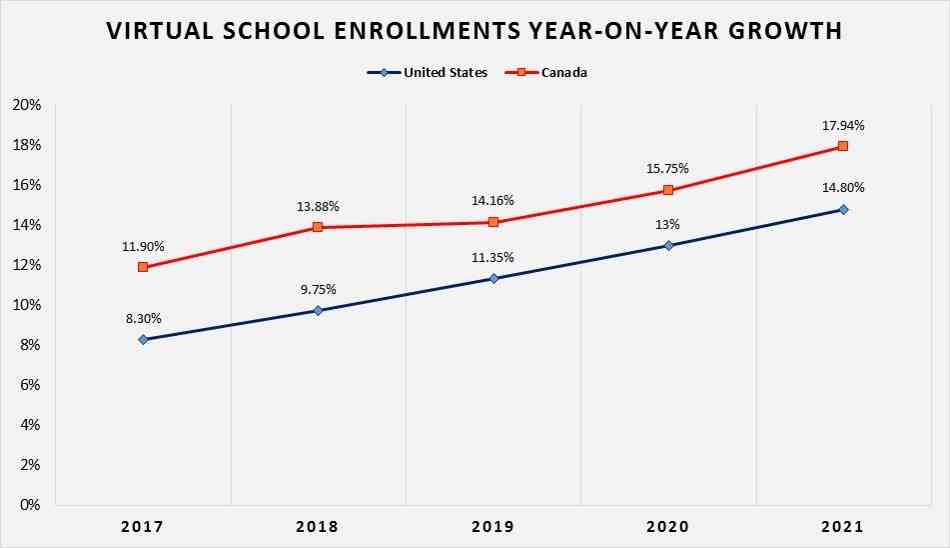Online learning is on the rise in Canada. It is becoming increasingly popular both in rural areas where access to comprehensive education can be challenging, and among parents who may need or want their children to learn from home. With high-speed internet access spreading to more remote areas of the country, access to virtual education is improving. According to Technavio’s new report on the virtual schools market in North America, enrollments in Canadian virtual schools will nearly double between 2016 and 2021.
In 2016, there were 233,783 students enrolled in Canadian virtual schools. That number is expected to exceed 460,000 by 2021, growing at a compound annual growth rate (CAGR) of 14.73%. Over 6% of the total K-12 population is enrolled in distance learning courses, and more than 70% of these students are enrolled in virtual schools.

The rise in popularity of distance education is driven by several factors. Late last year, the CRTC declared broadband internet to be a basic service that everyone in the country should have access to, setting targets to make it more accessible across Canada. Learning management systems (LMSs) are also increasing in number and quality, making it easier to develop and distribute educational content. Finally, cloud-based models are making it simpler and less expensive to create and implement virtual learning solutions.
Despite having a little over one-tenth the population of the US, the number of students enrolled in virtual education in Canada is not significantly lower than in the US. Of the two countries, Canada makes up about 41% of the virtual schools market, with the US accounting for the other 59%. Canada’s CAGR over the next 5 years is also expected to be higher, estimated at 14.73% compared to the United States’ 11.43%. Canada’s lower population density likely contributes to this — with a smaller number of people spread over a greater area, it can be challenging for students to gain access to all the courses they need in physical schools.
Over one-third of secondary schools in Canada have started providing education through electronic or online courses. The curriculum for online courses is developed by the school board, district, or province or territory. Education in Canada is a provincial matter, so there is a lack of education strategy at the federal level. As a result, the education industry in Canada is quite complex.
British Columbia, Ontario, and Alberta are provinces with the greatest student enrollment in online courses. Enrollment is also higher in rural areas than urban areas due to the limited access to education in those regions. Approximately 40% of rural secondary schools reported offering online courses to their students, compared with 35% of urban secondary schools.
With the CRTC working to make high-speed internet more accessible, and the tools to produce and administer online courses constantly improving, it is little wonder that virtual education is on the rise. Prospects are looking good both for the virtual schools market and for the students looking to take advantage of it.



